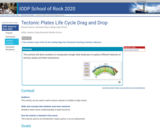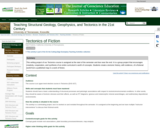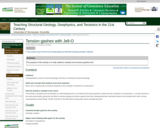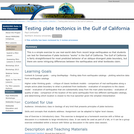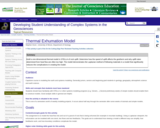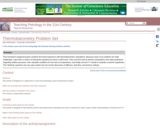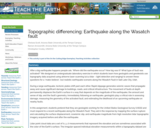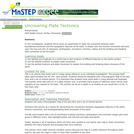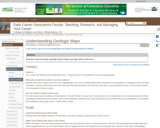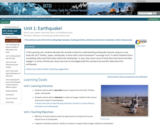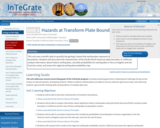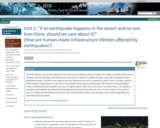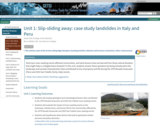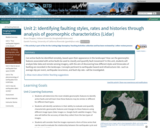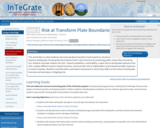After a big earthquake happens people ask, 'Where did the earthquake occur? How big was it? What type of fault was activated?' We designed an undergraduate laboratory exercise in which students learn how geologists and geodesists use topography data acquired using airborne laser scanning (a.k.a lidar -- light detection and ranging) to answer these questions for a *make-believe*, but realistic earthquake scenario along the Wasatch Fault in Salt Lake City, Utah.
During a large earthquake, tectonic plates shift past each other. Rapid slippage generates seismic waves that propagate away and cause significant damage to buildings, roads, and critical infrastructure. The movement of faults at depth permanently displaces the Earth's surface in a way that depends on the magnitude of the earthquake, the amount and sense of slip, and the fault's geometry. Immediately following an earthquake, geologists play a critical role in assessing damage, measuring the geometry of the activated fault, and estimating the likelihood of an upcoming earthquake on nearby faults.Â
In this assignment, students pretend that they are geologists working for the United States Geological Survey (USGS) and must respond to a recent earthquake along the Wasatch Fault. They aid in the response by mapping the surface rupture and calculating the surface displacement, coseismic slip, and earthquake magnitude from high resolution lidar topographic imagery acquired before and after the earthquake.Â
Lidar point cloud data are a set of (x, y, z) measurements that represent the elevation and are sometimes associated with the color of the Earth's surface. The irregular-spaced individual elevation measurements within a topography dataset are often gridded into a digital elevation model (DEM) raster where the data are represented with rows and columns of pixels each with a height value. DEM's are often visualized as topographic hillshades, which mimic how the elevation would appear from above. Topographic differencing is a technique used to estimate 3D surface displacements from high-resolution topographic imagery acquired before and after an earthquake. The exercise includes pre- earthquake imagery acquired by the state of Utah in 2013-2014. The "post-earthquake" mimics the lidar imagery that would be acquired in the days to weeks following a major earthquake.Â
****** The earthquake in this exercise represents a hypothetical event. The 'post' event high resolution topography was synthetically displaced, in a way that simulates a possible earthquake along the Wasatch fault given mapped fault geometry and earthquake scaling laws. An event similar to the hypothetical earthquake here is possible: Since 1847 when pioneers settled in Salt Lake City, there have been over 16 earthquakes with magnitude greater than 5.5. Geologic studies show repeated large earthquakes occurred prior to European settlement in the region. Recently (March 18, 2020), the Salt Lake Valley was shaken by the M5.7 Magna earthquake. This recent reminder further motivates our exercise.******
Â
Keywords: Earthquakes, active tectonics, structural geology, geodesy, lidar, remote sensing
Provenance: Chelsea Scott, Arizona State University at the Tempe Campus
Reuse: This item is offered under a Creative Commons Attribution-NonCommercial-ShareAlike license http://creativecommons.org/licenses/by-nc-sa/3.0/ You may reuse this item for non-commercial purposes as long as you provide attribution and offer any derivative works under a similar license.
(Note: this resource was added to OER Commons as part of a batch upload of over 2,200 records. If you notice an issue with the quality of the metadata, please let us know by using the 'report' button and we will flag it for consideration.)

